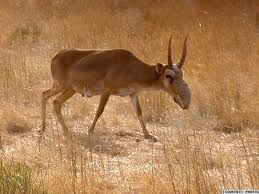 Saigo tatarica 羚
羊 角
Línɡ yánɡ jiǎo
Antelope's horn Family: Bovidae
Saigo tatarica 羚
羊 角
Línɡ yánɡ jiǎo
Antelope's horn Family: Bovidae
PART USED: Horn- The antelope is captured (usually in autumn) and its horns cut off for use. The horn is then dried in the sun and cut into thin slices.
FUNCTIONS
GROUP: Anticonvulsives for Endogenous Wind
1. Clear away Heat and calm the Liver.
2. Expel Wind and relieve spasm.
3. Clear away Liver Fire to improve visual acuity.
4. Clear away Heat and toxic material.
INDICATIONS
1. Heat with convulsions, hyperactivity or Wind transformation of Liver Yang with dizziness, numbness and tremor of extremities and convulsion, for severe Liver Fire syndrome manifested as epilepsy and insanity.
2. Conjunctivitis and headache.
3. Febrile diseases with coma, delirium and mania.
PREPARATIONS: Decoction 1-3 g as slices decocted separately. Juice 0.5-1g prepared by grinding. Powder 0.5-1g.[1]
